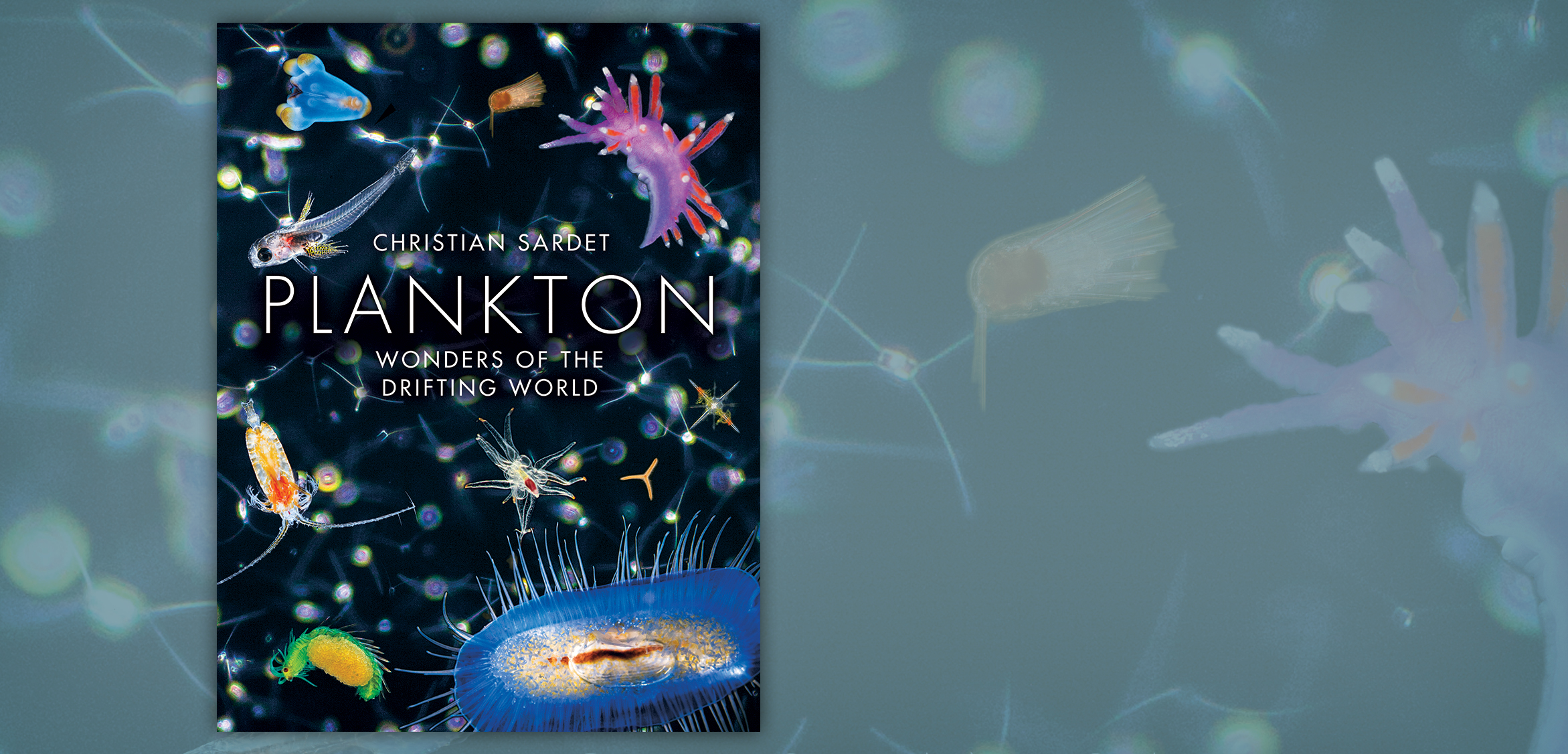Book Review: Plankton
A phantasmagoria of aquatic drifters, up close.
Article body copy
Plankton—that vast group of living organisms adrift in the water—is a little like dirt. Both are life-sustaining resources that we routinely swim through or step on without much reverence, yet we know they’re important. And in the case of plankton, critically so—planktonic life generates a whopping half of our oxygen supply. It forms a critical link in marine food chains, and it accumulates into valuable fossil fuel deposits on the ocean floor. Some species even influence cloud formation. But at the small end of its spectrum, planktonic beauty evades most of us. In fact, a teaspoon of seawater can bustle with over a million living creatures—human vision, of course, can’t resolve at that scale, and a single specimen is rendered a nondescript speck in our mind’s eye.
In Plankton: Wonders of the Drifting World, Christian Sardet calls readers over and invites us to peer through his microscope, revealing a jaw-dropping constellation of organisms that are not only astoundingly diverse but visually bizarre. The larva of a brachyuran crustacean resembles a skull suspended on a backbone. Some dinoflagellates look like headless ghouls; others create astoundingly intricate cellulose plates that could have been crafted by a master ceramicist. There are spaceships, starbursts, champagne flutes, dreamy inkblots, irises—and very few nondescript specks.
Plankton examines plankton in its many forms, from microscopic algae, bacteria, and zooplankton only microns long to jellyfish and siphonophores (the longest animals in the world) and provides insight into the complex dynamics between them.
The large format, full-bleed layout and preference for dramatic black backgrounds, along with astounding cover art featuring myriad psychedelic organisms, afford Plankton the aesthetic of an art book. The introductory pages confirm that the text is not intended to provide a comprehensive overview of ecology, oceanography, or climate science; it’s designed to introduce readers to “captivating” planktonic life, to show us what it is that researchers find so alluring about the organisms that account for 95 percent of the living biomass in the ocean.
Sardet, research director at the Observatoire Océanologique de Villefranche-sur-Mer and cofounder of Tara Expeditions, a French nonprofit that undertakes scientific expeditions on the schooner Tara, and his colleagues gathered many of the images for the book while at sea, using macro lenses and microscopes. Many images are remarkable—Sardet’s series of a jellyfish sucking the fluids out of a tiny fish and then expelling the leftovers, is especially impressive. And I would happily frame and hang the delicate “hula skirt” siphonophore image contributed by David Wrobel or the close-up of a Portuguese man-of-war’s vibrant blue filaments by Keoki Stender. But there is a surprising lack of consistency in quality from one page to the next. A slightly blurry looking micrograph is understandable and likely unavoidable for minute subjects that lack strongly defined edges, but when it comes to bigger animals like Velella and jellyfish—common targets for photographers—it’s puzzling that a subpar image would have been selected when better options are readily available. It can also be challenging for the reader to get a sense of scale for some subjects, though it could have been cumbersome for Sardet to include a reference for such a magnitude of species.
Overall, Plankton, which was translated from French and is linked to Sardet’s Plankton Chronicles project online, succeeds in imparting a sense of wonder. With hundreds of images and accompanying text, Sardet delivers an enticing glimpse into the invisible world within seawater.
Plankton: Wonders of the Drifting World
By Christian Sardet
222 pp. The University of Chicago Press

